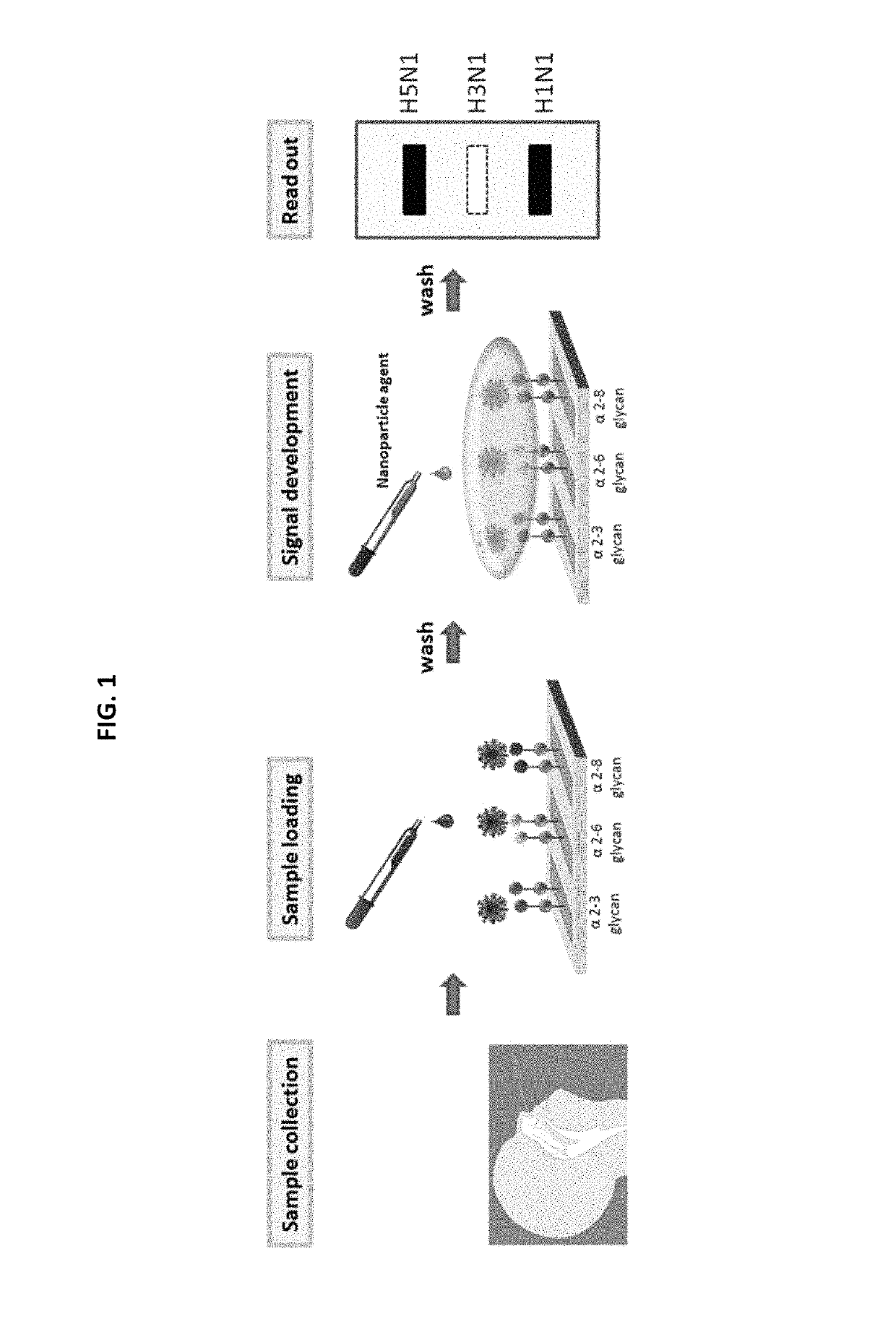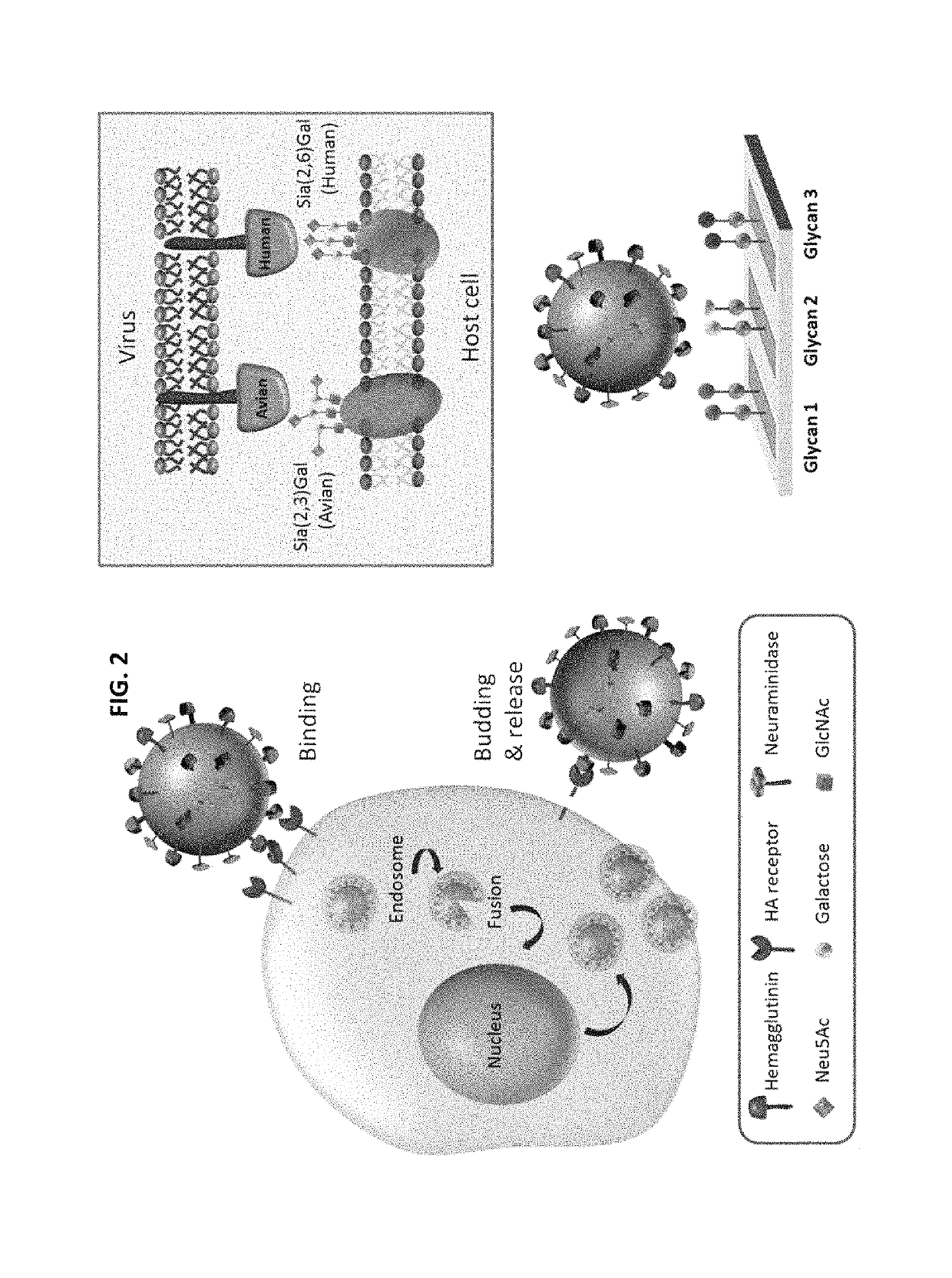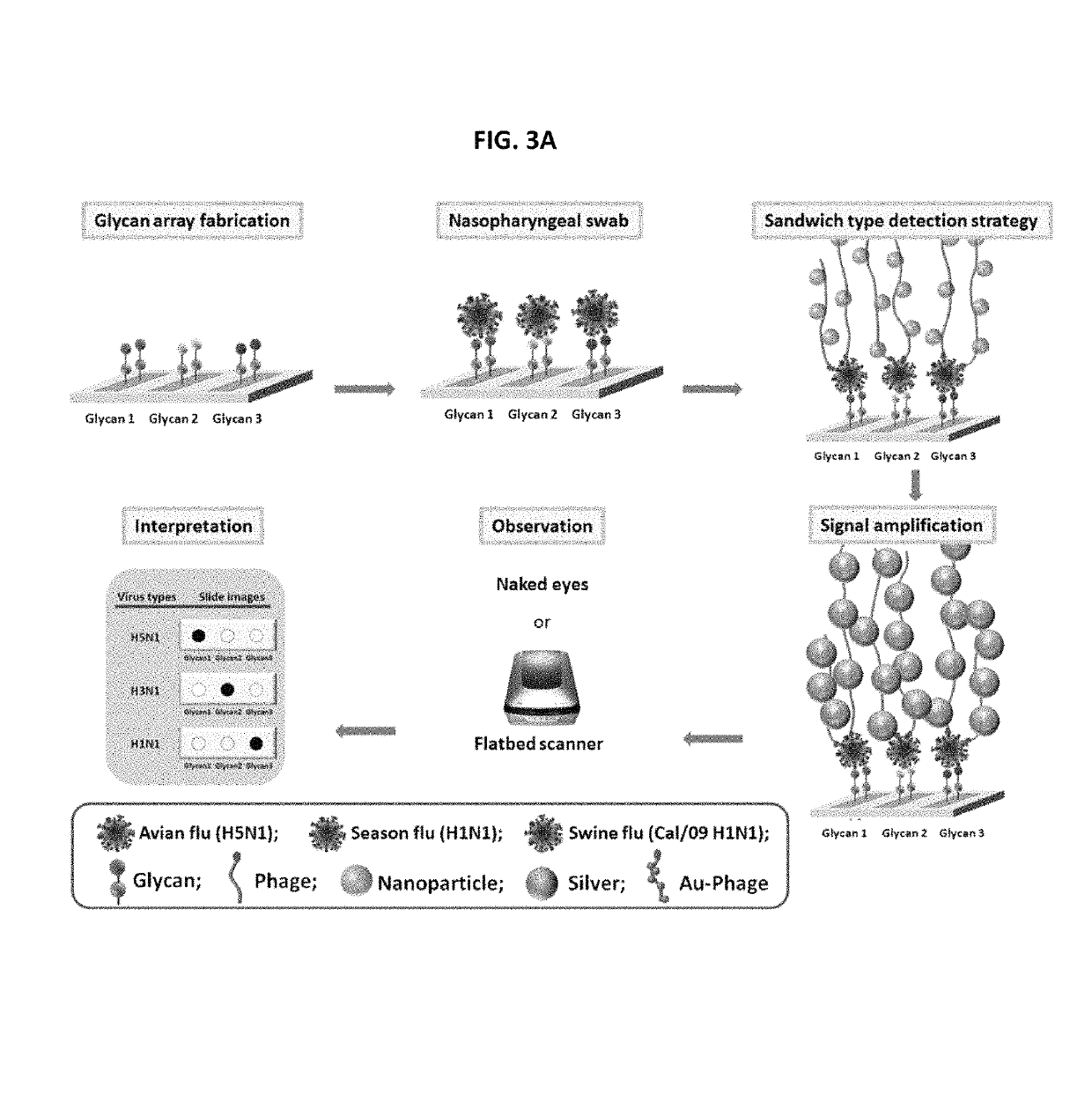Glycan arrays for high throughput screening of viruses
a high-throughput, virus-based technology, applied in the field of influenza virus subtype classification, can solve the problems of affecting the detection efficiency of influenza viruses, etc., to achieve the effect of high signal-to-noise ratio, rapid and easy control, and high signal-to-noise ratio
- Summary
- Abstract
- Description
- Claims
- Application Information
AI Technical Summary
Benefits of technology
Problems solved by technology
Method used
Image
Examples
example 1
nthesis
[0132]All oligosaccharides were prepared using synthetic procedures as described (Hsu, C.-H. et al. Chem. Eur. J. 2010, 16, 1754-1760; Hasegawa A, et al. Carbohydr. Res. 1995, 274, 165-181; Komba S, et al. Bioorg. Med. Chem. 1996, 4, 1833-1847; Otsubo N, et al. Carbohydr. Res. 1998, 306, 517-530; Yoshida M, et al. Glycoconjugate J. 1993, 10, 324). The synthetic oligosaccharides were further modified to cross-link to glass surface for the preparation of “glycan arrays” as described below.
example 2
paration
[0133]Samples of various viruses are collected from the Center for Disease Control and Prevention in TAIWAN, and provided by Dr. Jia-Tsong Jan (Genomic Research Center, Academia Sinica, Taiwan). All viruses were propagated in 10-day-old embryonated specific-pathogen free chicken eggs. Purified viruses were done by centrifugation at 100,000 g for 30 min and resuspended in PBS. Differences in the degree of virus purity did not influence significantly the pattern of receptor binding. Virus were inactivated by treatment with β-propiolactone (BPL; 0.05% v / v) for 60 minutes at 33° C., and resuspended in 0.01 M phosphate buffered saline pH 7.4 (PBS) and stored at −80° C. Comparison of samples of live and inactivated virus showed that BPL inactivation did not alter receptor binding specificity (Matrosovich M, et al. J. Virol. 1999, 73, 1146-1155.)
example 3
ray Fabrication
[0134]Amino-reactive N-hydroxysuccinimide (NHS)-activated glass microscope slides were used to fabricate glycan arrays by the standard protocol of Protein Application Nexterion Slide H. The NHS groups on the glass surface react readily with the primary amines of the amino modified glycans to form an amide linkage. Amine-modified glycans with desired concentration were dissolved in printing buffer (pH 8.5, 300 mM phosphate buffer with 0.005% (v / v) Tween 20) and were spotted on the glass microscope slides by robotic pin (BioDot, Cartesian Technologies; SMP3, Telechem International) deposition. Print slides were incubated under 80% humidity at 37° C. for 2 h followed by desiccation overnight. Before the binding assay, print slides were immersed with blocking buffer (50 mM ethanolamine in 50 mM borate buffer, pH 9.2) at room temperature for 1 h to remove remaining free NHS groups and then washed with washing buffer (PBST; 50 mM PBS buffer with 0.05% (v / v) Tween 20, pH 7.4...
PUM
| Property | Measurement | Unit |
|---|---|---|
| diameter | aaaaa | aaaaa |
| diameter | aaaaa | aaaaa |
| humidity | aaaaa | aaaaa |
Abstract
Description
Claims
Application Information
 Login to View More
Login to View More - R&D
- Intellectual Property
- Life Sciences
- Materials
- Tech Scout
- Unparalleled Data Quality
- Higher Quality Content
- 60% Fewer Hallucinations
Browse by: Latest US Patents, China's latest patents, Technical Efficacy Thesaurus, Application Domain, Technology Topic, Popular Technical Reports.
© 2025 PatSnap. All rights reserved.Legal|Privacy policy|Modern Slavery Act Transparency Statement|Sitemap|About US| Contact US: help@patsnap.com



